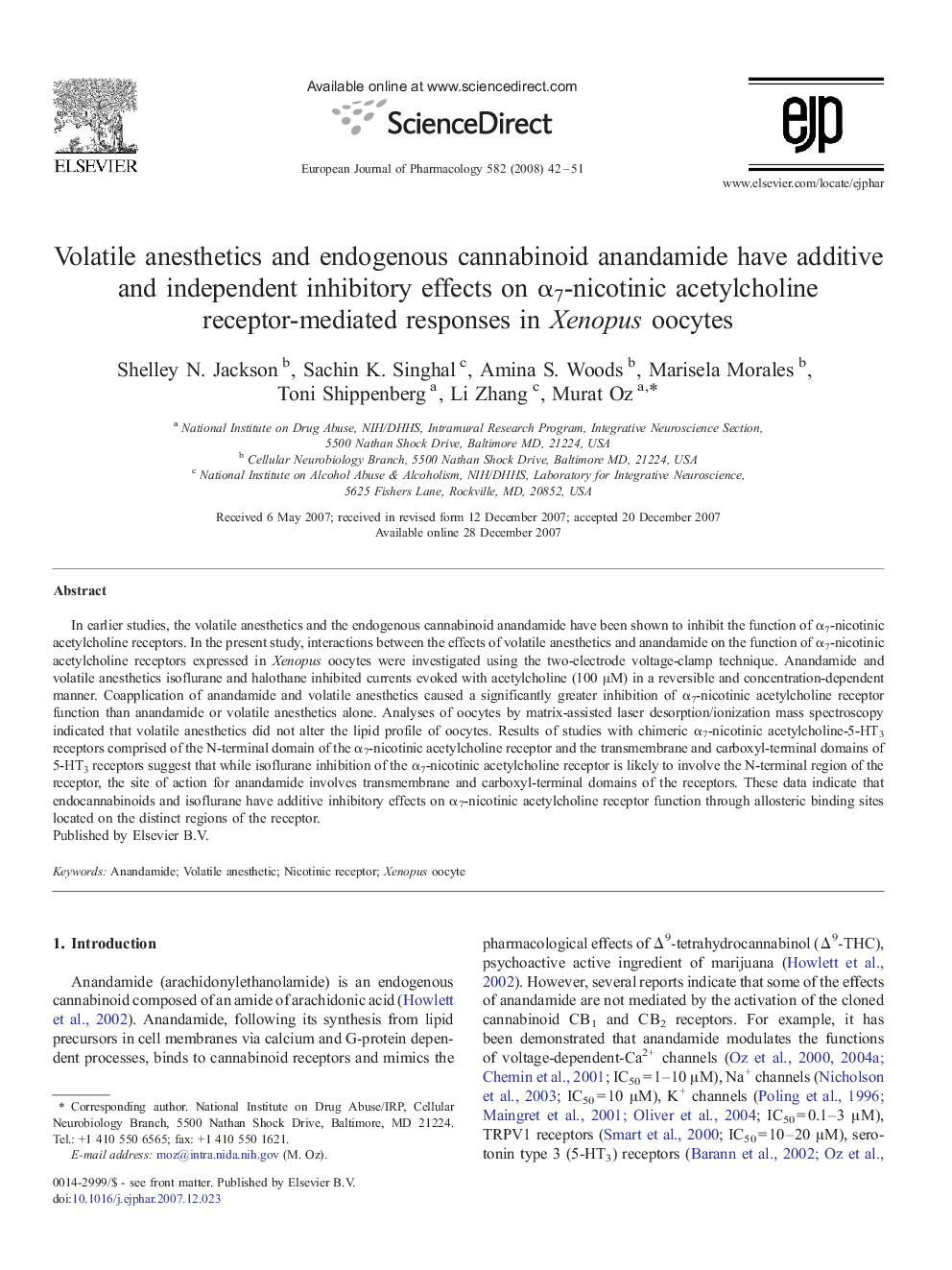| Article ID | Journal | Published Year | Pages | File Type |
|---|---|---|---|---|
| 2535475 | European Journal of Pharmacology | 2008 | 10 Pages |
In earlier studies, the volatile anesthetics and the endogenous cannabinoid anandamide have been shown to inhibit the function of α7-nicotinic acetylcholine receptors. In the present study, interactions between the effects of volatile anesthetics and anandamide on the function of α7-nicotinic acetylcholine receptors expressed in Xenopus oocytes were investigated using the two-electrode voltage-clamp technique. Anandamide and volatile anesthetics isoflurane and halothane inhibited currents evoked with acetylcholine (100 μM) in a reversible and concentration-dependent manner. Coapplication of anandamide and volatile anesthetics caused a significantly greater inhibition of α7-nicotinic acetylcholine receptor function than anandamide or volatile anesthetics alone. Analyses of oocytes by matrix-assisted laser desorption/ionization mass spectroscopy indicated that volatile anesthetics did not alter the lipid profile of oocytes. Results of studies with chimeric α7-nicotinic acetylcholine-5-HT3 receptors comprised of the N-terminal domain of the α7-nicotinic acetylcholine receptor and the transmembrane and carboxyl-terminal domains of 5-HT3 receptors suggest that while isoflurane inhibition of the α7-nicotinic acetylcholine receptor is likely to involve the N-terminal region of the receptor, the site of action for anandamide involves transmembrane and carboxyl-terminal domains of the receptors. These data indicate that endocannabinoids and isoflurane have additive inhibitory effects on α7-nicotinic acetylcholine receptor function through allosteric binding sites located on the distinct regions of the receptor.
